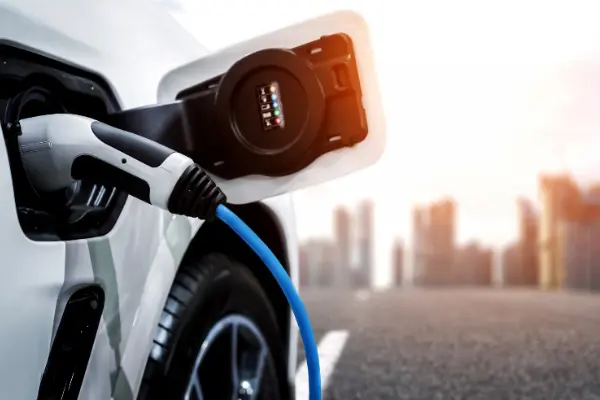The electric vehicle (EV) market has grown exponentially in recent years, with China emerging as a dominant player. Chinese electric vehicles (EVs) have gained a reputation for being more affordable than their Western counterparts, making them highly appealing to consumers worldwide. But why are Chinese EVs cheaper? The answer lies in a combination of strategic manufacturing, government support, and supply chain efficiency.
1. Economies of Scale in Manufacturing
China is the world’s largest producer of electric vehicles, with brands like BYD, NIO, and XPeng leading the charge. The massive scale of production gives Chinese manufacturers a cost advantage. Large-scale production allows for:
- Lower per-unit costs: The more vehicles produced, the lower the fixed costs are distributed across units.
- Streamlined processes: Efficient manufacturing techniques are developed and perfected, reducing waste and time.
With such a vast domestic market, Chinese EV makers can produce vehicles at high volumes, driving down costs significantly.
2. Government Incentives and Subsidies
The Chinese government has heavily invested in promoting EV adoption, offering subsidies and incentives to both manufacturers and consumers. These policies include:
- Tax Benefits: Reduction or elimination of sales tax for EV buyers.
- Manufacturer Subsidies: Direct financial support to EV manufacturers helps offset production costs.
- Infrastructure Development: Investment in charging infrastructure reduces costs for manufacturers and boosts consumer adoption.
These incentives reduce the financial burden on manufacturers, enabling them to price their vehicles more competitively.
3. Cost-Effective Labor
Labor costs in China are generally lower than in Western countries. While automation plays a significant role in EV manufacturing, human labor is still needed for assembly, quality control, and other processes. China’s lower labor costs contribute to reduced overall production expenses, allowing manufacturers to pass these savings on to consumers.
4. Vertical Integration in the Supply Chain
Chinese EV manufacturers often adopt vertical integration, where they control multiple stages of the production process. This includes sourcing raw materials, producing batteries, and assembling vehicles.
- Battery Production: China is a global leader in battery manufacturing, producing over 70% of the world’s lithium-ion batteries. Companies like CATL supply high-quality batteries at lower costs, giving Chinese EV makers a significant edge.
- Raw Material Access: China has secured access to critical raw materials like lithium, cobalt, and nickel, reducing dependence on imports and stabilizing costs.
This streamlined supply chain minimizes intermediaries and reduces costs, making Chinese EVs cheaper.
5. Simplified Designs for Affordability
Chinese EVs often focus on functionality and affordability, targeting mass-market consumers.
- Compact Models: Many Chinese EVs are smaller and designed for urban commuting, which lowers production costs.
- Minimal Features: Entry-level models often come with fewer luxury features, making them more accessible to budget-conscious buyers.
By prioritizing practical and cost-effective designs, Chinese manufacturers can keep prices low without compromising on quality.
6. Innovation and Technological Advancements
China’s EV industry benefits from rapid technological innovation, allowing manufacturers to develop cost-effective solutions. For example:
- Battery Innovations: Advancements in battery chemistry, such as lithium iron phosphate (LFP) batteries, reduce costs while maintaining performance.
- Standardization: The industry’s focus on standardized components reduces complexity and production costs.
These innovations make Chinese EVs both affordable and competitive in terms of performance.
7. Export Strategies and Global Expansion
Chinese EV manufacturers often adopt aggressive pricing strategies to penetrate international markets. By offering lower prices than Western competitors, they capture market share and build brand recognition. Additionally, their ability to produce at scale enables them to compete effectively in price-sensitive regions.
8. Lower Marketing and Branding Costs
Unlike Western automakers, which often invest heavily in marketing and brand-building, Chinese manufacturers focus more on product affordability and performance. This approach reduces overhead costs, allowing companies to price their vehicles more competitively.

Challenges and Trade-OffsWhile Chinese EVs are cheaper, there are some trade-offs that consumers may consider:
- Quality Concerns: While many Chinese EVs are well-made, some budget models may not meet the same quality or safety standards as Western brands.
- Limited Features: Entry-level models may lack the advanced features and luxury options found in higher-priced competitors.
- Global Perception: Some consumers may be hesitant to trust newer Chinese brands compared to established Western automakers.
Conclusion
Chinese electric vehicles are cheaper due to a combination of factors, including economies of scale, government support, supply chain efficiency, and cost-effective production methods. These advantages have enabled Chinese EV makers to dominate the domestic market and expand globally. While affordability is a key selling point, Chinese manufacturers are also improving the quality and performance of their vehicles to compete on a global scale. As a result, Chinese EVs are not only more accessible but also increasingly competitive in the rapidly evolving EV market.
Post time: 12-16-2024




